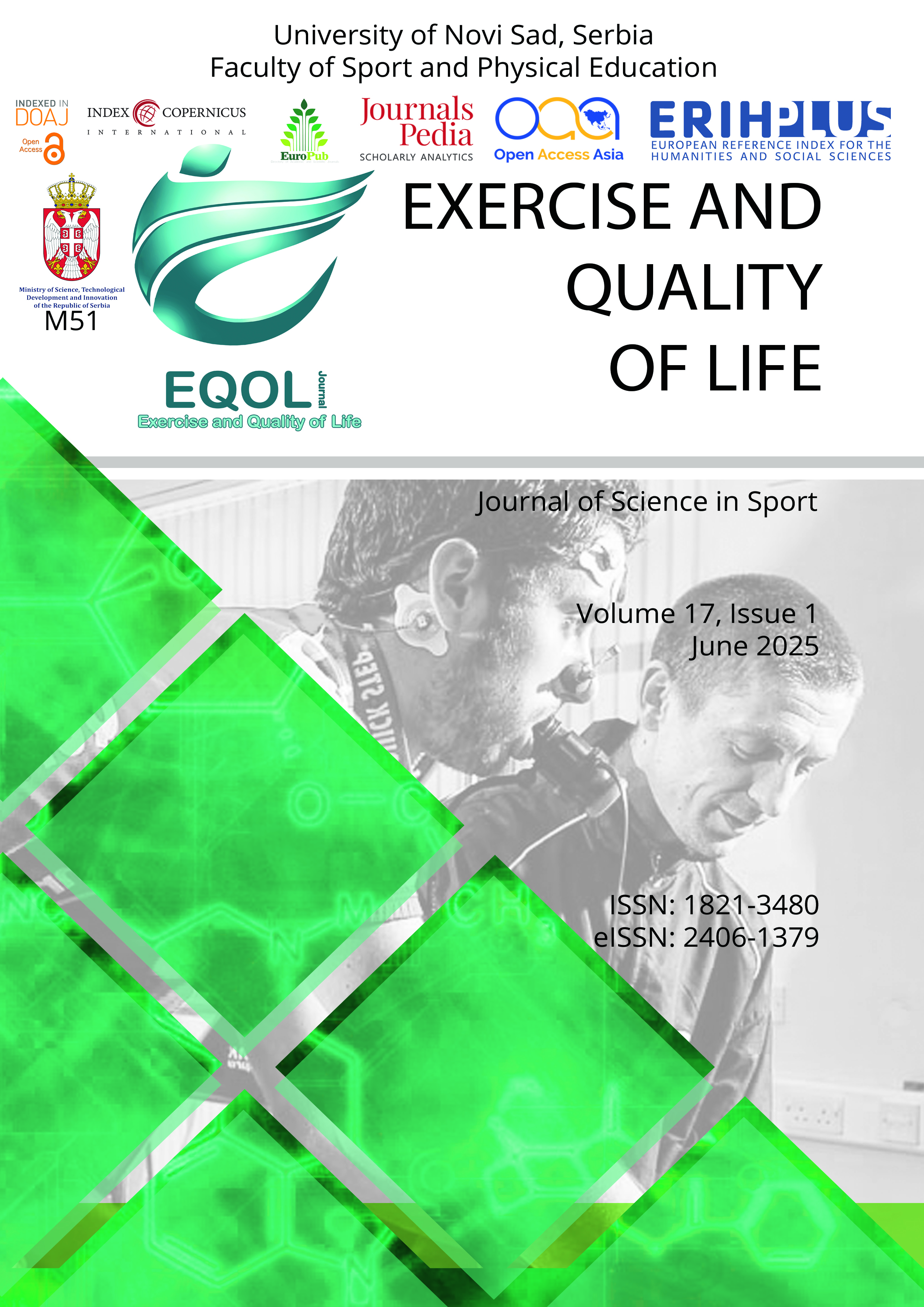Current issue

Volume 17, Issue 1, 2025
Online ISSN: 2406-1379
ISSN: 1821-3480
Volume 17 , Issue 1, (2025)
Published: 15.06.2025.
Open Access
All issues
Contents
01.06.2009.
Original scientific paper
The effect of ageing on contraction time of postural and non-postural skeletal muscles in master athletes
Normal aging is characterized by muscular atrophy and a loss of force-generating capacity. The goal of this research was to investigate the age and sport activity type on postural (vastus lateralis) and non postural (biceps femoris) muscles’ contraction time in 170 master athletes (athletic events) and 51 non athletes. We found significant age effect in postural muscle (P = 0.032) and also in non postural muscle (P < 0.001). However, we found sport activity type effect significant just in non postural muscle (P < 0.001). The interaction effect of age * sport was significant in both observed muscles. Sprinters/jumpers deteriorate with age the most in postural muscle, while non athletes in non postural muscle. We could conclude that non postural muscle deteriorate the most without regular sport activity, while postural muscle have enough daily stimuli to be prevented from major deterioration.
Boštjan Šimunič, Rado Pišot, Jörn Rittweger
01.06.2009.
Original scientific paper
Vertical jump performance and power drop after 35 days of bed rest
Physical – sport inactivity is often associated with loss of muscle mass, positive energy balance, fat gain, injuries, motor incompetence, and many others negative effects. The goal of this study was to evaluate loss of muscle function and performance as a response to total physical inactivity. Ten healthy male volunteers (age: 23.3 ± 2.2 years; body height: 179 ± 7.1 cm; body mass: 75.2 ± 9.3 kg) were measured before and after 35 days of horizontal bed rest. Energy intake was adapted from the beginning of the bed rest and associated with weekly changes in body mass and fat mass. Peak muscle power and maximal jump height was measured during vertical jump test, performed before and after bed rest. Maximum jumping power and jumping height decreased significantly after bed rest, for 10 W·kg-1 (19.2 %; P<0.001) and 11.2 (22 %; P<0.001), respectively. Inter subjects’ variability of the jumping height results was in the range from 8.6 % to 49.1 % and for jumping height from 6.8 % to 31.3 %. Results of this study confirm that vertical jump test demands vigorous human performance and should be conducted after bed rest studies in special care and considering huge inter subject variability in designing studies.
Gregor Cankar, Boštjan Šimunič, Jörn Rittweger, Rado Pišot























